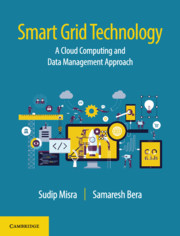Preface
Published online by Cambridge University Press: 20 October 2018
Summary
Overview and Goals
Due to the growing concerns about climate change and energy conservation, there has been a greater focus than ever before on the development of digitalized and green technology for modern power delivery systems – Smart Grid – to the customers. Smart grid is conceptualized as the integration of bi-directional communication networks on the existing electricity networks. With the help of this type of communication networks, service providers and customers have real-time information about the energy consumption and price of energy, respectively. Therefore, service providers can maintain a balance between real-time supply and demand, so as to maximize their revenues. On the other hand, customers can consume energy in an optimized manner to minimize their energy consumption cost. Consequently, different intelligent mechanisms – demand response, dynamic pricing, integration of renewable energy sources, and distributed energy service – are introduced to support the smart grid architecture.
Concurrently, cloud computing is an emerging technology that facilitates on-demand, real-time service platform dynamically with shared services to its clients. Cloud computing primarily provides three different services: software as a service (SaaS), infrastructure as a service (IaaS), and platform as a service (PaaS). Therefore, clients can utilize cloud resources according to their individual requirements. Another important feature of cloud computing is that it supports the implementation of a distributed architecture.
Recently, different studies have revealed that cloud computing is a promising technology that can support the smart grid requirements from different perspectives: energy management, information management, and security services. Real-time energy management is the most important feature of the smart grid. Different schemes are introduced for this purpose: demand scheduling, integration of storage devices, cooperative architecture, are a few examples. A micro-grid in smart grid provides electricity to customers in a distributed manner with the help of renewable and non-renewable energy sources. Therefore, all entities (such as customers, service providers, and third parties) require adequate real-time information in order to execute the said schemes. Consequently, it is required to have a common platform from where all the entities can fetch adequate real-time information, which, in turn, necessitates the availability of suitable information management schemes. In the smart grid, a massive number of smart meters is expected to be deployed in order to have real-time information about customers’ energy consumption patterns. Presently, big data management approaches have been popular for processing and storage of massive volumes of heterogeneous data generated at high speeds.
- Type
- Chapter
- Information
- Smart Grid TechnologyA Cloud Computing and Data Management Approach, pp. xxv - xxviiiPublisher: Cambridge University PressPrint publication year: 2018



